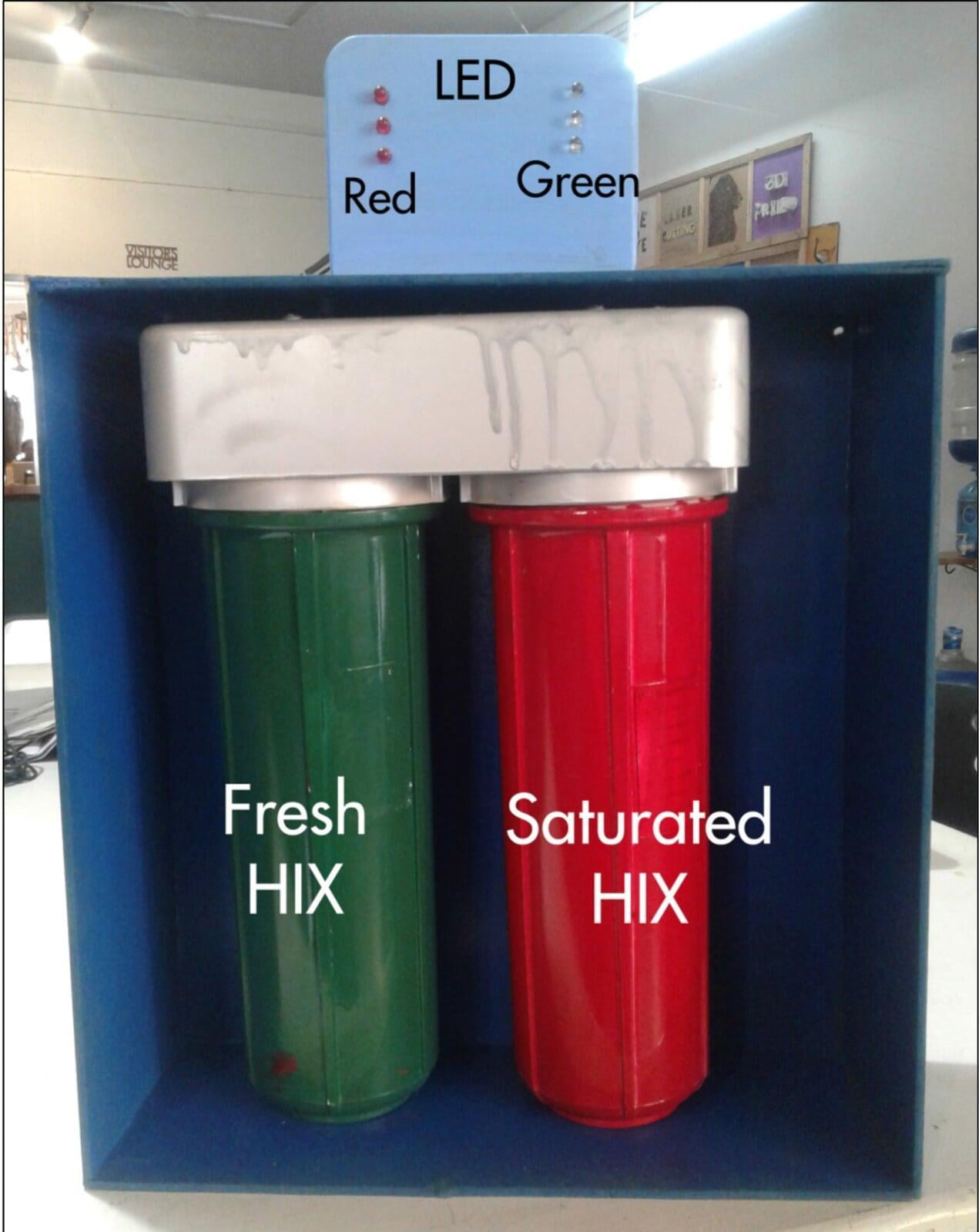Purification of arsenic contaminated water


Our students wanted to solve this problem by using innovative automated method where without any human intervention we can check whether HIX beads are saturated with arsenic or not. For this, they tried to use ultrasonic, IR sensors and color sensors. But with the educational kit sensors they were unable to detect any difference between fresh HIX beads and saturated HIX beads. Then we suggested them to use Arduino Moisture sensor and they found there is a conductivity difference between fresh HIX beads and saturated HIX beads, the conductivity of fresh HIX beads is greater than the saturated HIX beads.

